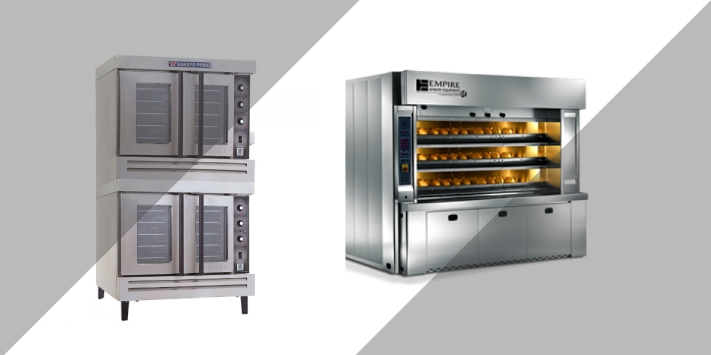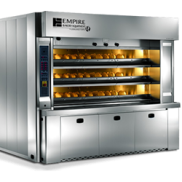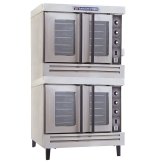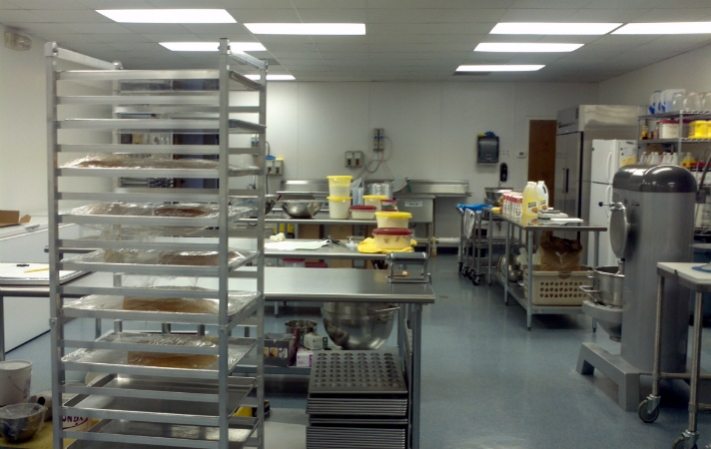
Deck ovens used by commercial bakeries often run for several hours everyday, their insides daubed with debris of cooked food and grease, and their doors closed and opened closed countless times during daily usage. Besides that, the sides and bottoms of deck ovens get encrusted with oil and baked food which can damage sheet metal. In order to keep them functional for a long period of time, it is important to get these essential bakery equipment pieces cleaned regularly.
There are many commercial deck oven suppliers offering maintenance services in Sydney. If your bakery equipment supplying firm is such a company, you can simply adopt for their cleaning services. But if this is not the case, you will either have to find a good professional firm offering the kind of services you seek or take matters into your own hands. Though cleaning a deck oven is a risky job and requires usage of appropriate skills and techniques, you might possibly be able to handle the task.
Given below are instructions for cleaning a deck oven:
Let the oven cool down and wipe away boil-overs and wet spills using a piece of wet cloth. Remove loose debris from the interior and pay meticulous attention to the door seal while doing so. You can even utilise a flue brush for loosening carbonised spills if required.
Remove the oven racks and clean them carefully in the sink with steel wool or wire brush. You may even use a commercial deck oven cleaner, but make you follow the manufacturer’s instructions. If the baked-on grime is too stubborn, an industrial-strength cleaning solution might be required for breaking it down. Make it a point to wipe out the equipment using a wet rag after cleaning it with some chemical solution.
Fill a spray bottle with a mixture of baking soda and water (3 tsp. baking soda and 1L water). Spray it on carbonised boil-overs and spills on the floor and walls of the oven. Repeat this multiple times until the spills flow down to the floor and can be wiped away.
The above mentioned processes can work wonders if you carry them out properly. However, if the deck oven is too dirty to heat up adequately, hiring a cleaning service provider would be the most prudent thing for you to do. The chemicals and tools available with professionals would be efficient enough for eliminating even the toughest of dirts from your oven.


 It is a very important piece of equipment for any artisan bakery that seeks to prepare exquisite and crusty loaves of bread. Although it takes up more space and necessitates skilled workers for operation, the end products are always of high quality. It typically makes use of conduction heating, which is a procedure that involves movement of heat from a deck or hot stone to the sheet pan or loaves of bread being baked. It also employs radiant heating for penetrating in the dough and heating it throughout. Being capable of carrying a lot of mass, it has excellent recovery time and also holds temperature really well. An important feature that must be considered while buying this type of equipment is whether it runs on electricity or gas. The utility costs of either greatly depend on the facility type and region. There are many reputed
It is a very important piece of equipment for any artisan bakery that seeks to prepare exquisite and crusty loaves of bread. Although it takes up more space and necessitates skilled workers for operation, the end products are always of high quality. It typically makes use of conduction heating, which is a procedure that involves movement of heat from a deck or hot stone to the sheet pan or loaves of bread being baked. It also employs radiant heating for penetrating in the dough and heating it throughout. Being capable of carrying a lot of mass, it has excellent recovery time and also holds temperature really well. An important feature that must be considered while buying this type of equipment is whether it runs on electricity or gas. The utility costs of either greatly depend on the facility type and region. There are many reputed  They are available in a plethora of variants – single rack, 10 pan, double rack, rotating rack, smaller designs with 1 to 5 pans, etc. One of the main features of these types is a fan that blows hot air and thus ensures transfer of heat. The convection heating process allows to use a wide range of temperature such as 425 degrees Fahrenheit for baking dinner rolls, hamburger buns, etc. or 150 degrees for drying meringus. Another beneficial feature of convection ovens is their capability of adding steam while baking. It aids in achieving a beautiful shine and fully expands the loaves of bread or anything else being baked.
They are available in a plethora of variants – single rack, 10 pan, double rack, rotating rack, smaller designs with 1 to 5 pans, etc. One of the main features of these types is a fan that blows hot air and thus ensures transfer of heat. The convection heating process allows to use a wide range of temperature such as 425 degrees Fahrenheit for baking dinner rolls, hamburger buns, etc. or 150 degrees for drying meringus. Another beneficial feature of convection ovens is their capability of adding steam while baking. It aids in achieving a beautiful shine and fully expands the loaves of bread or anything else being baked.
